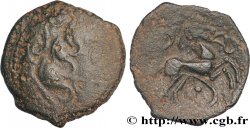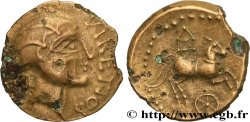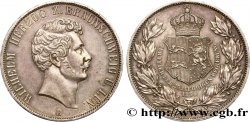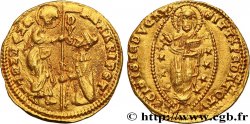v15_0382 - PICTONES / CENTROVESTE - Incerti Bronze VIPT
MONNAIES 15 (2002)
Начальная цена : 130.00 €
Назначить цену : 250.00 €
непроданный лот
Начальная цена : 130.00 €
Назначить цену : 250.00 €
непроданный лот
Тип Bronze VIPT
Дата: c. 60-40 AC.
Металл: bronze
Диаметр: 15,5 mm
Ориентация осей монеты: 9 h.
Вес: 2,46 g.
Редкость: R2
Комментарии о состоянии
Patine sombre. Petites taches rouges, particulièrement sur le grènetis au droit
Ссылки в каталоге: :
Лицевая сторона
Аверс: легенда: ANÉPIGRAPHE.
Аверс: описание: Tête masculine à droite les cheveux tirés en arrière.
Обратная сторона
Реверс: легенда: VIPT....
Реверс: Описание: Cheval sanglé galopant à droite ; au-dessus, les restes d'un fronton triangulaire de temple.
Комментарий
Les traces de coulée et de casse du flan sont visibles à 1 et 7 heures, ce qui rend la monnaie presque quadrangulaire. Dans son RIG - référence pour les légendes monétaires -, Brigitte Fischer donne la légende VIP.T ou VIPT ; notre exemplaire, comme celui gravé dans la RN 1860, donne plus l’impression de VIRT (comme le voyait A. Blanchet dans son Traité). La monnaie ne nous semblait pas excessivement rare mais est curieusement absente de la grande majorité des musées publics publiés.
The traces of casting and breakage of the flan are visible at 1 and 7 o'clock, which makes the coin almost quadrangular. In her RIG - reference for monetary legends -, Brigitte Fischer gives the legend VIP.T or VIPT; our example, like the one engraved in the RN 1860, gives more the impression of VIRT (as A. Blanchet saw in his Treatise). The coin did not seem excessively rare to us but is curiously absent from the vast majority of published public museums
The traces of casting and breakage of the flan are visible at 1 and 7 o'clock, which makes the coin almost quadrangular. In her RIG - reference for monetary legends -, Brigitte Fischer gives the legend VIP.T or VIPT; our example, like the one engraved in the RN 1860, gives more the impression of VIRT (as A. Blanchet saw in his Treatise). The coin did not seem excessively rare to us but is curiously absent from the vast majority of published public museums







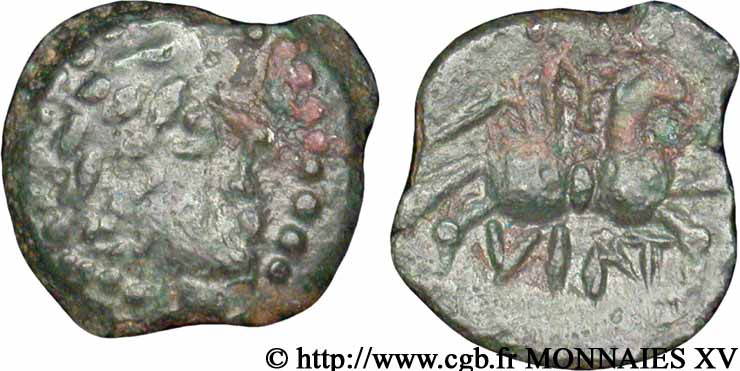
 Cообщить об ошибке
Cообщить об ошибке Распечатать страницу
Распечатать страницу Отправить мой выбор
Отправить мой выбор Задать вопрос
Задать вопрос Consign / sell
Consign / sell
 Информация
Информация
